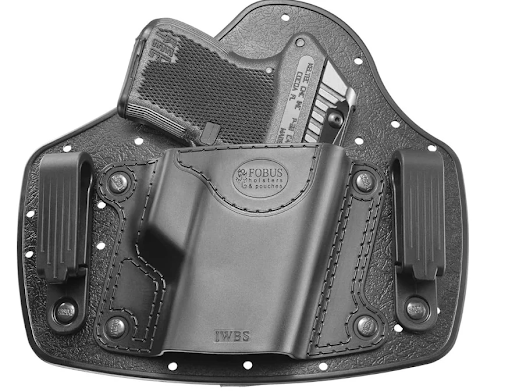Carrying a firearm for self-defense requires proper training, especially when using an OWB concealed carry setup. OWB holsters (Outside-the-Waistband holsters) offer better accessibility, comfort, and stability compared to IWB (Inside-the-Waistband) options. However, achieving smooth and secure firearm retention while maintaining concealment takes practice and the right gear.
In this guide, we’ll cover essential training tips for mastering OWB concealed carry, ensuring a quick draw and strong retention. Whether you’re new to carrying or an experienced shooter refining your skills, these techniques will help improve your confidence and efficiency.
Why Choose an OWB Holster for Concealed Carry?
Many firearm owners prefer OWB gun holsters for concealed carry due to their:
✔ Faster Draw Speed – OWB holsters allow a natural grip and quicker access compared to IWB options.
✔ Enhanced Comfort – Wearing a holster outside the waistband reduces pressure on the body, making it ideal for all-day carry.
✔ Better Firearm Stability – A high-quality OWB holster provides secure retention, minimizing unwanted movement.
✔ Improved Training Experience – OWB setups are frequently used in self-defense and tactical training due to their efficiency.
To effectively use an OWB concealed carry holster, you need to train for smooth draw techniques, proper retention, and concealment strategies.
Training Tips for Smooth Draw & Retention
1. Master Your Draw Technique
A smooth and consistent draw is critical in self-defense situations. Follow these steps to improve your OWB draw:
- Grip the Firearm Properly – Establish a firm, high grip on your pistol while keeping your trigger finger outside the guard.
- Pull Straight Up – Lift the gun from the holster in a controlled motion to avoid unnecessary resistance.
- Rotate & Present – As you clear the holster, rotate the gun forward while bringing it into your line of sight.
- Acquire Your Target – Focus on your sights and align with your target before engaging.
Tip: Use dry-fire drills at home (with an unloaded gun) to practice your draw speed and consistency before training at the range.
2. Work on Holster Retention Drills
Proper retention ensures your firearm stays secure, preventing accidental dislodging or unauthorized access.
Retention Techniques to Practice:
- Passive Retention – Test your holster’s built-in retention by adjusting tension screws for a snug but smooth draw.
- Active Retention – If using an OWB holster with a retention strap or locking mechanism, practice disengaging it quickly while drawing.
- Retention Under Pressure – Train for real-world scenarios by practicing retention while moving, grappling, or defending against an attempted weapon grab.
Tip: Simulate stressful situations with a training partner attempting to disrupt your draw, helping you develop real-world readiness.
3. Concealment Strategies for OWB Carry
Since OWB gun holsters sit outside your waistband, concealment requires the right clothing and positioning.
Clothing Choices for Concealment:
- Loose-fitting shirts or jackets – Avoid tight clothing that might “print” the firearm shape.
- Longer garments – Sweatshirts, flannels, or lightweight vests help keep your gun hidden.
- Dark or patterned fabrics – These minimize visibility compared to lighter, solid colors.
Holster Positioning:
- 3 o’clock Position – Ideal for easy access and concealment under an untucked shirt.
- 4–5 o’clock Position – Better for deep concealment while maintaining comfort.
- Appendix Carry (AIWB) – Less common for OWB, but can be effective with certain holsters and body types.
Tip: Perform “mirror checks” before leaving home to ensure your setup is fully concealed.
Final Thoughts
Carrying with an OWB concealed carry holster offers comfort, speed, and accessibility—but mastering its use takes practice. By refining your draw technique, holster retention, concealment strategies, and defensive drills, you’ll enhance your ability to protect yourself effectively.
Investing in high-quality OWB gun holsters and training regularly will ensure you stay prepared and confident in any self-defense situation. Stay safe, stay practiced, and carry responsibly!

